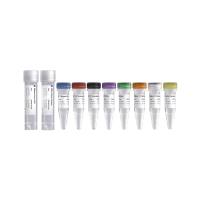iCODA: RNAi-Based Inducible Knock-In System in Trypanosoma brucei
互联网
互联网
相关产品推荐

Recombinant-Trypanosoma-brucei-brucei-GPI-mannosyltransferase-1PIGMGPI mannosyltransferase 1 EC= 2.4.1.- Alternative name(s): GPI mannosyltransferase I; GPI-MT-I Phosphatidylinositol-glycan biosynthesis class M protein; PIG-M TbPIG-M
¥12600

T7 RNAi Transcription Kit(T7RNAi逆转录试剂盒)( TR102)
¥1350

btuC/btuC蛋白/btuC; OE_2952FCobalamin import system permease protein BtuC蛋白/Recombinant Halobacterium salinarum Cobalamin import system permease protein BtuC (btuC)重组蛋白
¥69

miRNA成熟体封闭/knock down 载体构建
询价

Recombinant-Dog-C-X-C-chemokine-receptor-type-3CXCR3C-X-C chemokine receptor type 3; CXC-R3; CXCR-3 Alternative name(s): Interferon-inducible protein 10 receptor; IP-10 receptor CD_antigen= CD183
¥12026
相关问答

